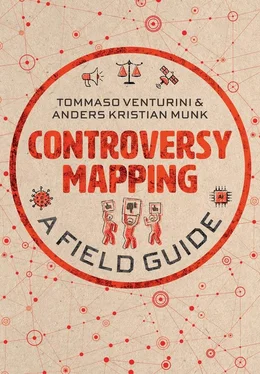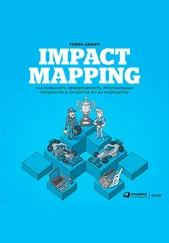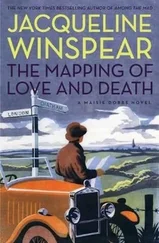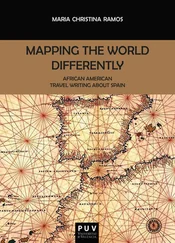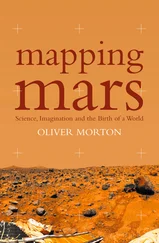Tommaso Venturini - Controversy Mapping
Здесь есть возможность читать онлайн «Tommaso Venturini - Controversy Mapping» — ознакомительный отрывок электронной книги совершенно бесплатно, а после прочтения отрывка купить полную версию. В некоторых случаях можно слушать аудио, скачать через торрент в формате fb2 и присутствует краткое содержание. Жанр: unrecognised, на английском языке. Описание произведения, (предисловие) а так же отзывы посетителей доступны на портале библиотеки ЛибКат.
- Название:Controversy Mapping
- Автор:
- Жанр:
- Год:неизвестен
- ISBN:нет данных
- Рейтинг книги:4 / 5. Голосов: 1
-
Избранное:Добавить в избранное
- Отзывы:
-
Ваша оценка:
- 80
- 1
- 2
- 3
- 4
- 5
Controversy Mapping: краткое содержание, описание и аннотация
Предлагаем к чтению аннотацию, описание, краткое содержание или предисловие (зависит от того, что написал сам автор книги «Controversy Mapping»). Если вы не нашли необходимую информацию о книге — напишите в комментариях, мы постараемся отыскать её.
Controversy Mapping A crucial field guide and hands-on companion for the digital age,
is an indispensable resource for students and scholars of media and communication, as well as activists, journalists, citizens, and decision makers.
Controversy Mapping — читать онлайн ознакомительный отрывок
Ниже представлен текст книги, разбитый по страницам. Система сохранения места последней прочитанной страницы, позволяет с удобством читать онлайн бесплатно книгу «Controversy Mapping», без необходимости каждый раз заново искать на чём Вы остановились. Поставьте закладку, и сможете в любой момент перейти на страницу, на которой закончили чтение.
Интервал:
Закладка:
This overload of issues also explains why conflict has become a favorite genre of modern media. Already in the 1970s, Herbert Simon noted that “in an information-rich world, the wealth of information means a dearth of something else: a scarcity of whatever it is information consumes. What information consumes is rather obvious: it consumes the attention of its recipients” (Simon, 1971, p. 40). Attention (and not information) is therefore the scarce resource whose pursuit increasingly drives the media market and consequently the public debate (Goldhaber, 1997; Crogan & Kinsley, 2012; Terranova, 2012; Citton, 2014). Equally important are the vanishing boundaries that used to separate news from entertainment (Prior, 2005). The convergence of all types of communication in the same digital devices and platforms means that public debates are nowadays in direct competition with all other kinds of online content, “an all-out war for the time of an audience that has more choices than at any point in history” (Klein, 2020, p. 279).
In this ruthless fight for public attention, controversies have a competitive advantage. Because they promote high-activation feelings (Feldman Barrett & Russell, 1998; Clore & Storbeck, 2014), they are very effective in capturing attention and are more likely to be passed along in online networks (Berger & Milkman, 2012; Guadagno et al., 2013). As the alt-right’s slogan goes: “conflict is attention and attention is influence” (Marantz, 2019). This practice of using controversy to hijack the media agenda poses a real challenge for controversy mappers, whose cartographic efforts can offer the “oxygen of amplification” (Phillips, 2016) to actors who fuel controversies with the exclusive goal of enhancing their own visibility.
For better or worse, these techno-environmental crises and media evolutions have made controversies increasingly prominent. Ignoring them is no longer an option, but neither is fueling them by sharing them on social media in a burst of outrage or virtue signaling. Instead, we have to learn to patiently unravel their imbroglios and distribute their charges.
Controversy mapping between Actor-Network Theory and digital methods
As ubiquitous as they may be, controversies can be hard to appreciate and take seriously. The desire to avoid them or write them off as irrelevant or malignant increases the appeal of simplifying discourses and populist policies, promoting draconian and even authoritarian solutions (Latour, 2017a). Down with the experts and their subtleties! Down with public debate and its scandals! Lacking the tools and resources to sort properly through our collective disagreements, it is hard to resist the temptation for simple solutions to complicated problems (Zizek, 2008).
This book is a call against that temptation. It is a call to give controversies a chance; an invitation to resist the urge to slash the knots that tie our actions to their multiple consequences and begin caring for them instead. This does not mean sanctifying all controversies, but rather learning to distinguish the conflicts that are nothing but attempts to manipulate public attention from the ones that concern sociotechnical arrangements vital to our collective life.
This effort to unfold public debate, to care for all viewpoints while not giving everyone the same credit, to explore collective disputes and make them more legible, is a form of mapmaking, although not (or not only) in a geographical or even a graphical sense. While information visualization (Klanten & Van Heerden, 2009; Cairo, 2012, Yau, 2012) plays an important role in controversy mapping, the representation we are talking about is not only visual. Rather, the objective of controversy mapping is to unfold sociotechnical disputes in a conceptual space where its multiple actors and issues can be weighed against each other. To equip this type of civic mapmaking with a conceptual and methodological toolbox, we draw on two traditions of social research, namely Actor-Network Theory and Digital Methods .
Actor-Network Theory (ANT) is a methodological tradition in the social study of science and technology founded in the 1980s by Michel Callon, Bruno Latour, John Law and others. From an ANT perspective, the first step in understanding sociotechnical debates is to not write them off as deviations; mistakes deriving from human irrationality or from a simple shift in the balance of power. Rather, to understand controversies, we must suspend our a priori judgment and resist both realist and relativist conceptions of truth and power.
Philosophical realism is the assumption that the truth is “out there” waiting to be uncovered. It entails a conviction that, as our knowledge of the world extends, so does our capacity to settle controversies. This conception is as old as modern science and resonates across the centuries in the famous motto of Gottfried Leibniz: “Calculemus!” – no need for vain discussions, consensus shall follow once the problem has been rationally figured out.
Relativism , on the other hand, assumes truth to be nothing more than what is accepted at a given point in time. No matter whether such consensus is reached by persuasion or imposition: if all truths are alike, then there is no point in considering the arguments of your opponents (let alone to change your mind). If there is no truth, then there is also no point debating it.
Though diametric opposites, both positions (simplified here for the sake of argument) belittle the relevance of controversies involving science and technology as an object of public inquiry. From a purebred realist viewpoint, controversies are hallmarks of human imperfection, the constant reminder that our knowledge is flawed. Conversely, from a die-hard relativist position, controversies are mere symptoms of a transformation in the balance of forces, a sign that an emergent faction has acquired the strength to challenge the status quo. Neither realists nor relativists have reason to consider controversies as valuable in their own right.
To elude both realism and relativism, controversy mapping relies on the idea that truth and power are built together. As Steven Shapin and Simon Schaffer explain in their book on the birth of the scientific method: “solutions to the problem of knowledge are embedded within practical solutions to the problem of social order, and different practical solutions to the problem of social order encapsulate contrasting practical solutions to the problem of knowledge” (Shapin & Schaffer, 1985, p. 15). Sheila Jasanoff calls this entanglement the “co-production of science and the social order” (2004). To unravel this co-construction, ANT draws on a series of discussions that occupied the interdisciplinary field of Science and Technology Studies (STS) in the 1970s, 1980s and 1990s. These discussions provide the theoretical backbone for controversy mapping and hence for many of the chapters in this book. For readers who would like to delve deeper into the history of controversy analysis in STS, our conversation with Bruno Latour in the postscript offers some context. Trevor Pinch also provides an excellent introduction in a chapter for the International Encyclopedia of the Social and Behavioral Sciences (Pinch, 2015; see also Pinch & Leuenberger, 2006). Other accounts are available in the edited volume by Thomas Brante, Steve Fuller and William Lynch on Controversial Science: From Content to Contention (Brante et al., 1993) and in Dominique Pestre’s Introduction aux Science Studies (Pestre, 2006). Finally, Sheila Jasanoff’s retrospective piece on the “Genealogies of STS” (2012) looks back at controversy studies in STS and considers their role in shaping the identity of STS as an empirical investigation into science epistemology.
Читать дальшеИнтервал:
Закладка:
Похожие книги на «Controversy Mapping»
Представляем Вашему вниманию похожие книги на «Controversy Mapping» списком для выбора. Мы отобрали схожую по названию и смыслу литературу в надежде предоставить читателям больше вариантов отыскать новые, интересные, ещё непрочитанные произведения.
Обсуждение, отзывы о книге «Controversy Mapping» и просто собственные мнения читателей. Оставьте ваши комментарии, напишите, что Вы думаете о произведении, его смысле или главных героях. Укажите что конкретно понравилось, а что нет, и почему Вы так считаете.
